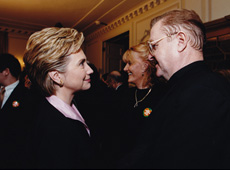Few would bet on May to stay
Posted By: September 23, 2017
Few would bet on May to stay
Irish News Editorial. Belfast. Saturday, September 23, 2017
Santa Maria Novella Church, a Renaissance basilica in Florence, a city rich in history, art, and architecture, was a curious choice for Theresa May to outline her government’s strategy on leaving the EU.
She evoked the spirit of the Renaissance – “a period of history that inspired centuries of creativity and critical thought across our continent and which in many ways defined what it meant to be European.”
However, it was a mainly British audience that traveled to Italy to listen to her speech with some diplomats present but no leaders of the 27 remaining EU states.
Indeed, while standing in this beautiful and deeply European city, she took the opportunity to tell the other member states that Britain has “never totally felt at home” in the EU, which is perhaps something of an understatement given the referendum decision to instigate divorce proceedings from the rest of Europe.
While much of her speech was aspirational – and added little to what has already been outlined in respect of the border between Northern Ireland and the Republic – there was a clear attempt by Mrs. May to move the process forward.
Key to the British government’s future strategy is a proposal that the UK would continue to be subject to existing EU rules and regulations until 2021, two years after the current exit date of March 2019.
This is a significant step for Mrs. May’s government and an admission that a hard Brexit by the existing deadline would be unworkable.
The prime minister told EU nationals living in the UK that they would be able to carry on living their lives as before, saying that protections for them would be written into British law.
UK courts would also be able to take into account rulings of the European Court of Justice following Brexit.
In return for a two-year transition period, the British government pledged to honor the UK’s commitments to the
EU budget thought to be around €20 billion.
Quite how all this will go down with the hardline Brexiteers remains to be seen.
The prime minister turned up in Florence after a difficult period which exposed the deep divisions in her cabinet.
A two-year transition will be welcomed by those who hope it will allow for some sense of order to be injected into this process, avoiding the so-called cliff-edge that would be disastrous for the economy.
But Mrs. May is in a weak position having gambled on a snap election which has left her requiring life support from the DUP.
Given the vicious infighting and jockeying for position going on in her own party, few would bet that Theresa May will still be prime minister in 2019, never mind 2021.










